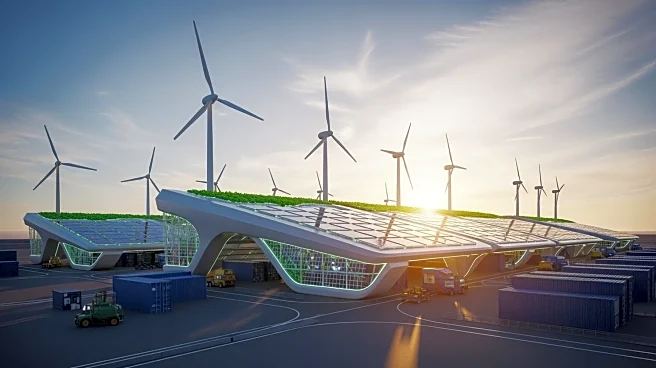What's Happening?
U.S. and Chinese officials have reported significant progress in the development of the California-China green shipping corridor, a pioneering initiative aimed at decarbonizing one of the world's busiest
shipping routes. The project, facilitated by C40 Cities, involves the ports of Shanghai, Los Angeles, and Long Beach, and seeks to establish a long-distance green shipping corridor. Recent developments include the completion of shore power infrastructure at these ports, enabling them to reach full capability for reducing emissions while vessels are docked. Additionally, Shanghai has developed a green methanol bunkering operation, supplying over 47,000 tons of green methanol, marking China's first linkage for domestically produced green methanol. The California ports are also advancing their methanol bunkering infrastructure and have commissioned a Clean Fuels Study.
Why It's Important?
The advancement of the California-China green shipping corridor is a critical step in global efforts to reduce carbon emissions in the shipping industry, which is a significant contributor to climate change. By establishing infrastructure for green fuels like methanol, the initiative supports the transition to low-carbon shipping practices. This development not only aligns with California's state-mandated emission reduction goals but also sets a precedent for international collaboration in environmental sustainability. The successful implementation of this corridor could serve as a model for other regions, potentially leading to widespread adoption of green shipping practices and contributing to global climate goals.
What's Next?
The working groups involved in the green shipping corridor project are continuing to address emerging fuel standards and conduct studies on fuel supply and demand. Their goal is to demonstrate the feasibility of deploying zero lifecycle carbon emission containerships by 2030. Chinese officials have outlined additional measures to expand green shipping corridors in phases, accelerate the development of green and low-carbon vessels, and enhance green fuel supply capacity. These efforts are expected to foster a more efficient and greener shipping ecosystem, with potential expansions to other major ports and international collaborations.
Beyond the Headlines
The initiative highlights the growing importance of government-market collaboration in achieving environmental sustainability. By sharing best practices and supporting innovation, the project not only addresses immediate emission reduction needs but also encourages long-term shifts in shipping industry standards. The establishment of green corridors could lead to significant changes in global trade patterns, as ports and shipping companies adapt to new environmental regulations and consumer demands for sustainable practices.












